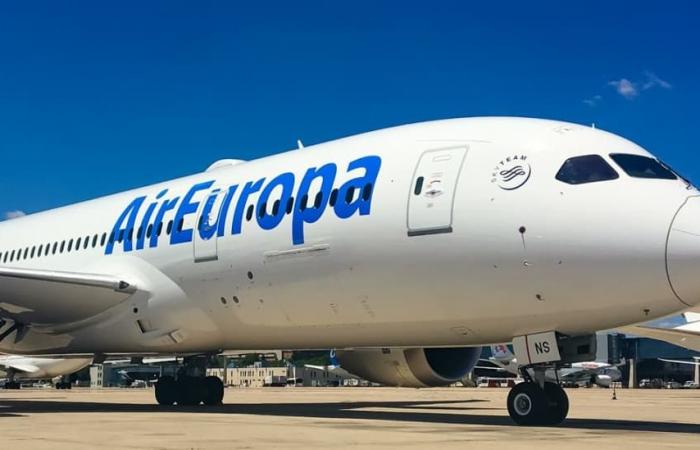The plane was due to fly from Madrid in Spain to Montevideo in Uruguay. The tremors were so severe that four passengers were in intensive care.
The 325 passengers on this Air Europa flight had the fright of their lives. The Boeing 787-9, which was flying from Madrid, Spain to Montevideo, Uruguay, on Monday, was forced to make an emergency landing after severe turbulence.
“Due to the severity of the turbulence, for greater safety,” the plane had to be diverted to Natal, in the northeast of Brazil, where it “landed normally,” Air Europa explained in a statement.
About thirty passengers were injured, 23 had to be taken to hospital, including 4 who are now in intensive care. The first reports are chilling.
Some reported passengers flying through the cabin. Others told Telemundo news that at least one passenger flew out of his seat and was stuck in the ceiling of the plane, as seen in the video below.
“From one moment to the next, the plane destabilized and went into a dive. The people who were not wearing seat belts flew up and hit the ceiling, and they were injured,” one of them said.
“There were passengers with fractures and injuries to their arms, faces and legs. It was quite a horrible feeling; we thought we were going to die there, but thank God that didn’t happen,” another passenger told Reuters.
It is relatively rare for turbulence to cause such serious injuries. But these incidents tend to increase, especially since turbulence is becoming more and more violent, particularly because of climate change.
Incidents are becoming less and less rare
In May, one person died and about thirty were injured. on board a Singapore Airlines plane who experienced “severe turbulence” during his flight from London to Singapore.
Turbulence is caused by various weather conditions such as cloud formations (vertical clouds), thunderstorms and air currents in mountain ranges or jet streams.
Wind shear can also cause turbulence. This is a fairly sudden change in the intensity and direction of the wind. The aircraft then moves violently due to changes in the speed and direction of the air currents.
They are classified into three families. “Light” turbulence causes a small movement of the aircraft that does not affect passenger comfort. “Moderate” turbulence means that passengers cannot stand up in the aircraft.
Finally, during “severe” turbulence, the plane moves in such a way that the passenger feels as if he is stuck to his seat (if he is strapped in), or that he flies out of his seat with a significant risk of being thrown against the ceiling of the aircraft. Hence the interest in remaining strapped in throughout the flight as recommended by the personnel on board.
The position you occupy on board is also important: seats located at the center of gravity of the plane and in the wings offer the most protection, those located at the rear the least.
Olivier Chicheportiche BFM Business journalist






